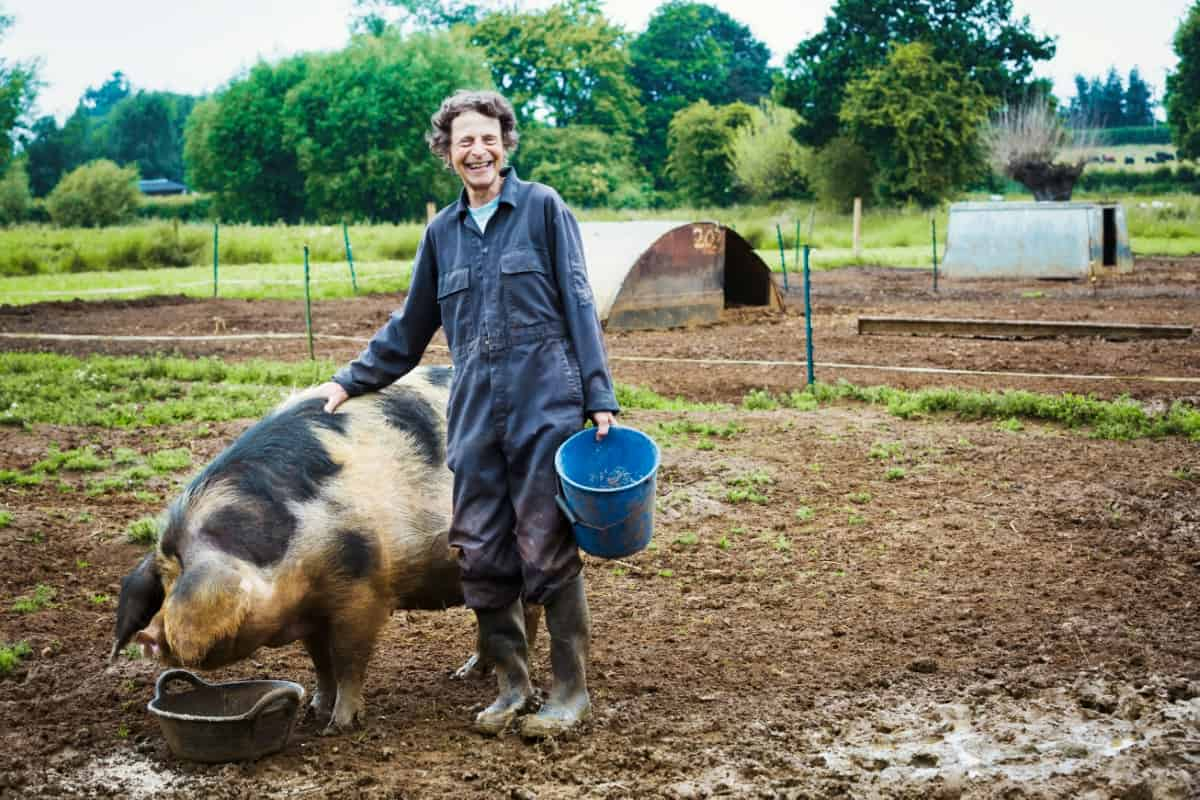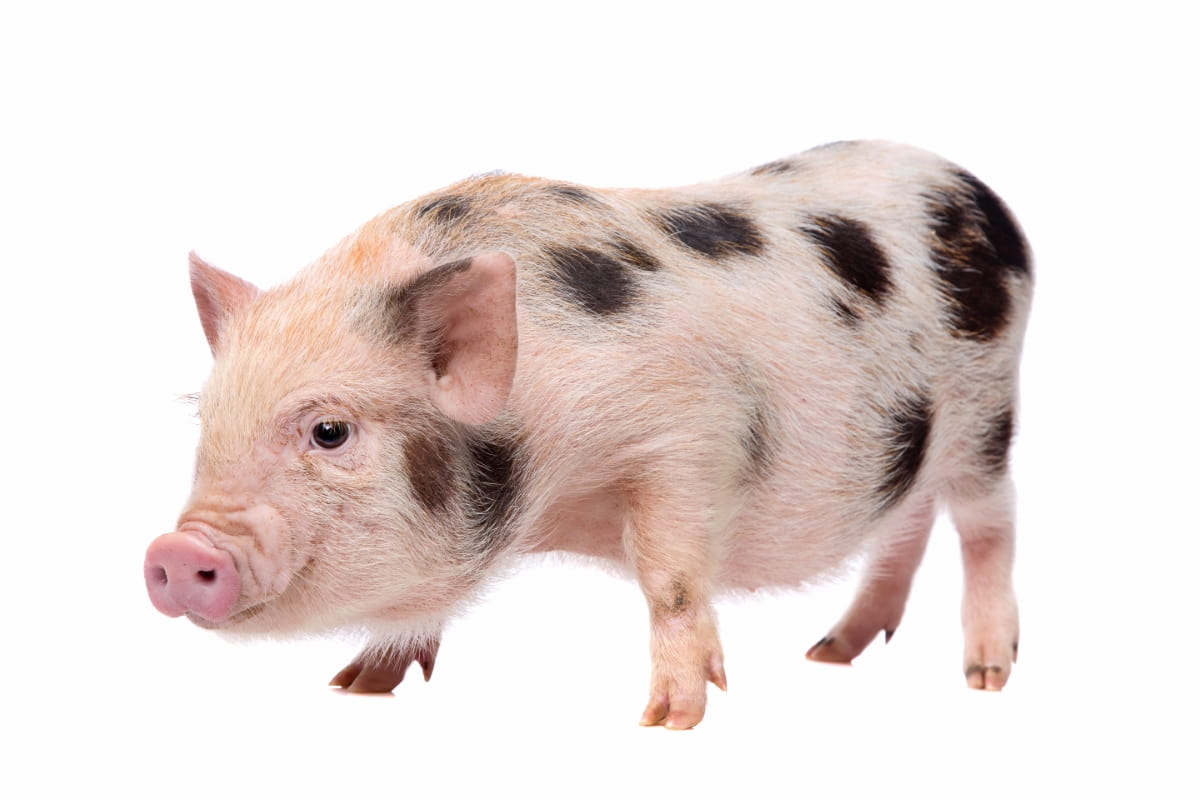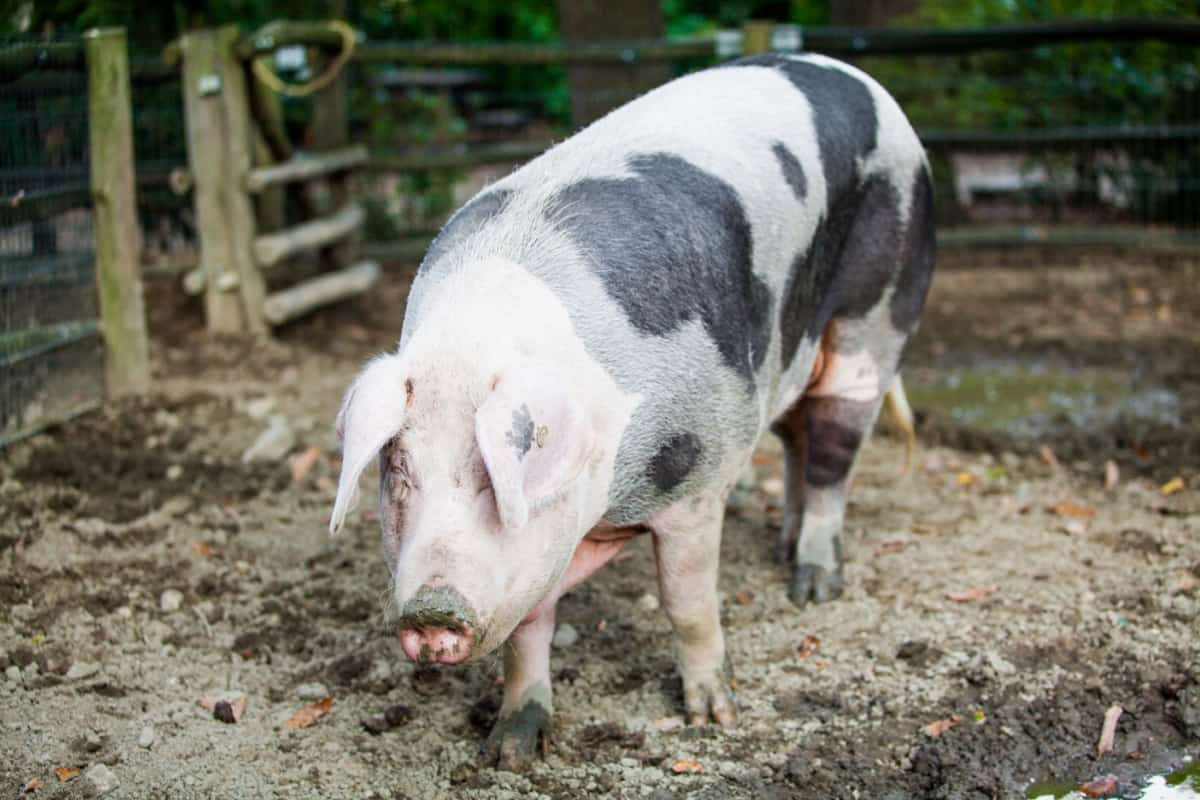Discover captivating information about the Auckland Island Pig! Originating from the subantarctic islands, these pigs boast a robust build and bristle-covered bodies. Unravel their brilliant size, bodily features, benefits, and drawbacks in this concise blog. Prepare to be amazed by using these enigmatic creatures!

Auckland Island Pig Facts
Auckland Island Pig Origin and History
The Auckland Island Pig is a special breed of pig with an interesting foundation and history. These pigs are native to the Auckland Islands, a faraway archipelago in the southern Pacific Ocean, around 465 kilometers south of New Zealand. This breed’s foundation can be traced back to the early 19th century when British sailors brought domestic pigs to the Auckland Islands as a plausible meal source during their visits.
Over time, these pigs adapted to the island’s environment, creating beautiful characteristics. They are recognized for their hardiness and capacity to forage under challenging terrains, making them well-suited to survive in the harsh conditions of the islands.Due to their isolation, the Auckland Island Pig has maintained its genetic purity, making it a quintessential breed for conservation efforts. Various corporations are now working to protect and hold this unique breed, recognizing its historical and genetic value.
Size of Auckland Island Pigs: Facts and Measurements
The intriguing breed of pigs known as Auckland Island pigs, often called Auckland Island feral pigs, lives on the isolated Auckland Islands in the Southern Ocean. These pigs are descended from farmed pigs that early explorers brought to the islands. Adult Auckland Island pigs generally measure between 90 and 180 centimeters (35 to 71 inches) in length and 60 to 100 centimeters (24 to 39 inches) in height, according to the most recent statistics in 2021.
Pigs may weigh between 100 and 250 kilograms (220 and 550 pounds) as adults. These pigs have evolved a wild lifestyle in response to the island’s rough topography and primarily eat plants, roots, and miniature animals.
Physical Characteristics of Auckland Island Pigs: Appearance and Traits
Appearance: Auckland Island pigs are medium-sized animals with sturdy and muscular build. They possess an extraordinary coat coloration, typically black or darkish brown, with occasional white markings on their face, legs, and underbelly. The coat is coarse and bristly, presenting safety against the harsh island environment.
Size: Adult Auckland Island pigs commonly weigh between one hundred to one hundred fifty kilograms, with men barely larger than females. They stand around seventy-five to 90 centimeters tall at the shoulder.
Traits: These pigs are well-adapted to the rugged terrain of Auckland Island. They are agile and have an eager sense of smell, helping in their foraging abilities. Due to their isolated island habitat, they showcase unique genetic characteristics compared to different pig breeds.
Benefits of Raising Auckland Island Pigs: Pros and Advantages
- Robust and Hardy Breed: Auckland Island pigs are known for their resilience and adaptability to various environmental conditions, making them less challenging to elevate and hold than other breeds.
- Sustainable Farming: These pigs are well-suited for free-range and pasture-based systems, advertising eco-friendly and sustainable farming practices.
- Efficient Feed Converters: Auckland Island pigs have a superb feed conversion rate, which means they efficaciously convert feed into physique mass, lowering average feed costs.
- Superior Meat Quality: The pork from these pigs is tender, succulent, and wealthy in flavor, making it a favored desire for shoppers and cooks alike.
- Genetic Preservation: Raising Auckland Island pigs contributes to conserving a rare and unique breed, maintaining genetic variety in the pig farming industry.
- Low Disease Susceptibility: These pigs display natural resistance to frequent swine diseases, decreasing the need for antibiotics and veterinary interventions.
- Minimal Environmental Impact: With their grazing habits, Auckland Island pigs can assist in controlling weeds and pests, minimizing chemical interventions.
- Versatility in Culinary Use: Their well-marbled meat allows for various cooking styles, from roasting to charcuterie, enhancing culinary creativity.
Drawbacks of Keeping Auckland Island Pigs: Cons and Challenges
The keeping of Auckland Island pigs, a breed unique to the isolated Auckland Islands, has disadvantages. First, their ravenous hunger and destructive foraging habits could degrade their habitat, hurting the fragile island ecosystems. Additionally, because they are not indigenous to many areas, these pigs can outcompete local creatures for resources, endangering the local fauna and flora. In addition, their rapid reproduction rate raises the risk of overpopulation, aggravating existing problems.Another issue is health-related.
In case you missed it: Kolbroek Pig Facts: Origin, Size, Physical Characteristics, Pros, and Cons

Auckland Island Pig Breed Information and Characteristics
Native to Auckland Island in New Zealand, the Auckland Island Pig is a distinctive and unusual breed. These pigs are miniature to medium in size, well built, and range in height from 16 to 22 inches and weight from 130 to 200 pounds. They look striking, with a black coat that occasionally sports white patterns.
These pigs are renowned for their resilience, capacity to thrive in challenging conditions, and creative foraging skills. Pigs from Auckland Island are calm, kind, and wonderful friends. They are regarded as a critically endangered breeds, necessitating protection and attention to save their genetic legacy due to their small number and preservation efforts.
Auckland Island Pig Conservation Status and Efforts
The International Union for Conservation of Nature (IUCN) has designated the Auckland Island Pig (Sus Scrofa) as being under “Endangered” status. These pigs are unique to Auckland Island, one of the subantarctic islands of New Zealand.
Population and Threats: Only 300 individuals were thought to be living in the wild as of 2021. Rats and feral cats, two introduced predators, are a severe danger to their existence. Their susceptibility is further worsened by the degradation of their habitat and the spread of illness.
Conservation efforts: To safeguard the Auckland Island Pig, environmentalists team with the Department of Conservation in New Zealand. They put in place pest management methods to eliminate invasive species and protect the pigs’ natural environment. Monitoring and research initiatives also seek to comprehend their behavior and reproductive patterns to support conservation plans.
Unique Features of Auckland Island Pigs: Distinct Traits and Behaviors
- Size: Auckland Island pigs are miniature, compact, and sturdy.
- Coloration: They boast a striking black color with occasional white markings.
- Adaptability: These pigs have adapted to harsh environments and withstand extreme weather conditions.
- Foraging: They exhibit exceptional foraging skills, digging for roots and tubers.
- Social behavior: Auckland Island pigs are known for their cooperative and social nature within their groups.
- Reproduction: They have a high reproductive rate, aiding their population growth.
- Swimming prowess: These pigs are excellent swimmers, enabling them to reach food-rich coastal areas.
- Nocturnal tendencies: Auckland Island pigs are primarily active during the night
Auckland Island Pig Habitat and Natural Environment
The subantarctic Auckland Islands, a part of New Zealand, are the primary home of the Auckland Island pig (Sus Scrofa). These islands have rocky landscapes, thick woods, and a lot of flora, which makes them a good place for pigs to live. The Auckland Islands’ natural environment includes various animals, bird species and marine mammals. The pigs contribute to the ecology by rooting and foraging, impacting soil composition and plant development. Conservation initiatives concentrate on population control to lessen effects on local flora and animals.
Auckland Island Pig Diet and Feeding Requirements
Auckland Island pigs are omnivorous and highly adaptable. Their diet mainly comprises vegetation such as grasses, leaves, and roots, along with insects, small animals, and bird eggs. They possess a versatile feeding behavior that helps them survive in their natural habitat. A balanced diet is crucial to ensure their well-being in captivity, consisting of commercial pig feed supplemented with fruits, vegetables, and occasional protein-rich treats.
In case you missed it: Pietrain Pig Facts: Origin, Size, Physical Characteristics, Pros, and Cons

An adequate water supply is essential for hydration. With their ability to forage and consume various foods, they display a remarkable ability to adapt to different feeding environments, making them resilient and healthy pigs.
Auckland Island Pig Breeding and Reproduction Facts
Unique breeds called Auckland Island pigs are indigenous to New Zealand’s isolated Auckland Islands. They are tough, medium-sized creatures that excel at surviving in challenging conditions. Breeding is ongoing throughout the year, peaking in the spring and summer. The average litter size for sows is 4-6 piglets, and the gestation period is roughly 115 days.
Piglets mature sexually at approximately seven months of age. Controlled breeding programs provide genetic variety, and careful observation promotes population health. The preservation of this uncommon and essential breed depends on conservation initiatives.
Conclusion
Auckland Island Pigs are feral descendants of domestic pigs introduced to Auckland Island, New Zealand. They have a medium-sized, robust build with a distinctive ginger coat. Pros include adaptability, while cons involve their impact on native ecosystems as an invasive species.
- Feed Your Flock for Less: Top 10 Tips to Save on Chicken Feed
- Ultimate Guide to Ossabaw Island Hog: Breeding, Raising, Diet, and Care
- Hatching Answers: The Top 10 Reasons Your Chickens Aren’t Laying Eggs
- Eggs and Economics: Breaking Down the Cost of Raising Backyard Chickens
- Defend Your Greens: Proven Methods to Keep Iguanas Out of Your Garden
- Ultimate Guide to Cinnamon Queen Chicken: A Comprehensive Guide for Beginners
- Ultimate Guide to California Tan Chicken: Breeding, Raising, Diet, Egg-Production and Care
- Ultimate Guide to Marsh Daisy Chicken: Breeding, Raising, Diet, and Care
- 10 Types of Chicken Farming Businesses You Can Start for Profits